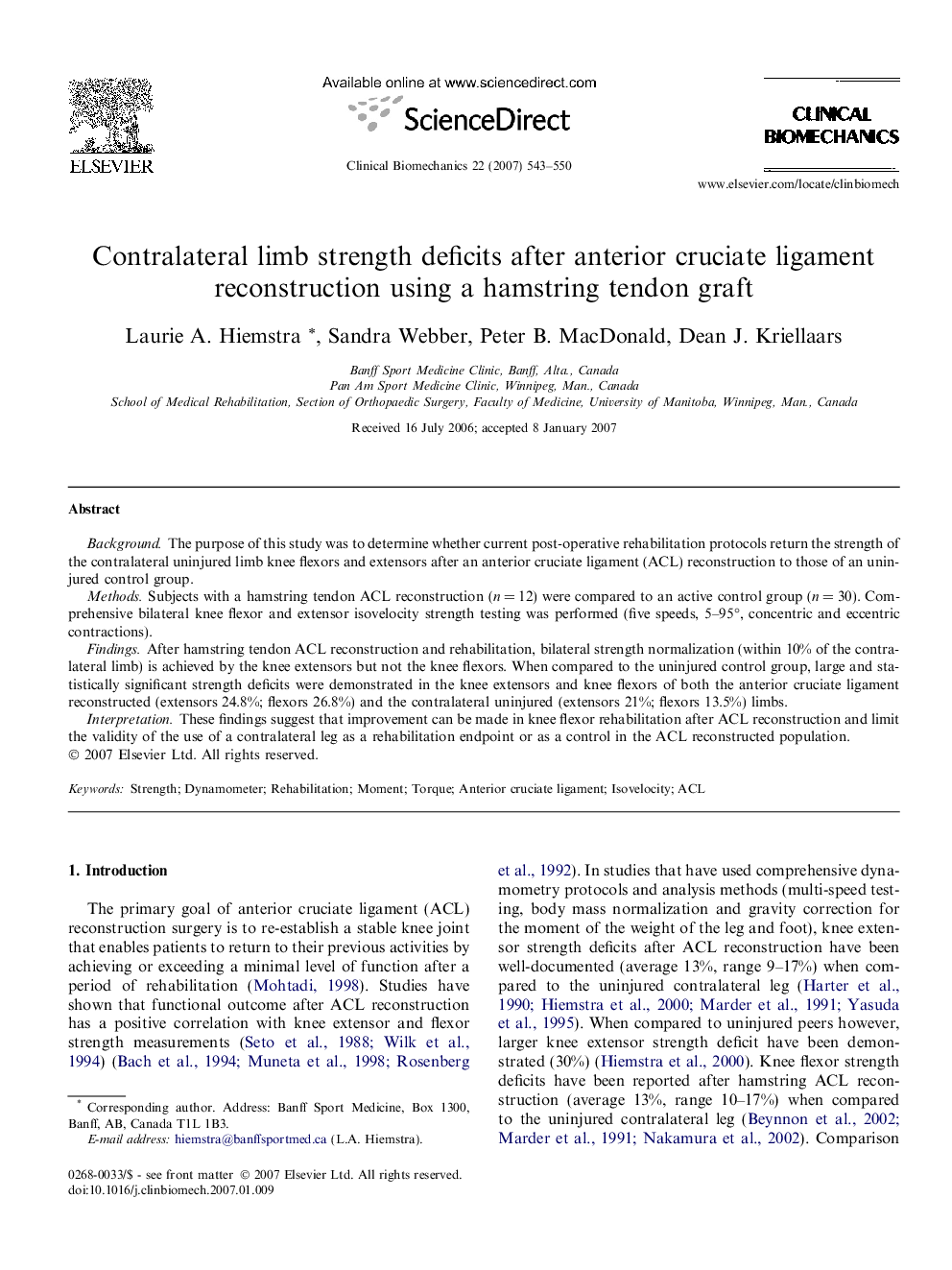| Article ID | Journal | Published Year | Pages | File Type |
|---|---|---|---|---|
| 4051367 | Clinical Biomechanics | 2007 | 8 Pages |
BackgroundThe purpose of this study was to determine whether current post-operative rehabilitation protocols return the strength of the contralateral uninjured limb knee flexors and extensors after an anterior cruciate ligament (ACL) reconstruction to those of an uninjured control group.MethodsSubjects with a hamstring tendon ACL reconstruction (n = 12) were compared to an active control group (n = 30). Comprehensive bilateral knee flexor and extensor isovelocity strength testing was performed (five speeds, 5–95°, concentric and eccentric contractions).FindingsAfter hamstring tendon ACL reconstruction and rehabilitation, bilateral strength normalization (within 10% of the contralateral limb) is achieved by the knee extensors but not the knee flexors. When compared to the uninjured control group, large and statistically significant strength deficits were demonstrated in the knee extensors and knee flexors of both the anterior cruciate ligament reconstructed (extensors 24.8%; flexors 26.8%) and the contralateral uninjured (extensors 21%; flexors 13.5%) limbs.InterpretationThese findings suggest that improvement can be made in knee flexor rehabilitation after ACL reconstruction and limit the validity of the use of a contralateral leg as a rehabilitation endpoint or as a control in the ACL reconstructed population.
